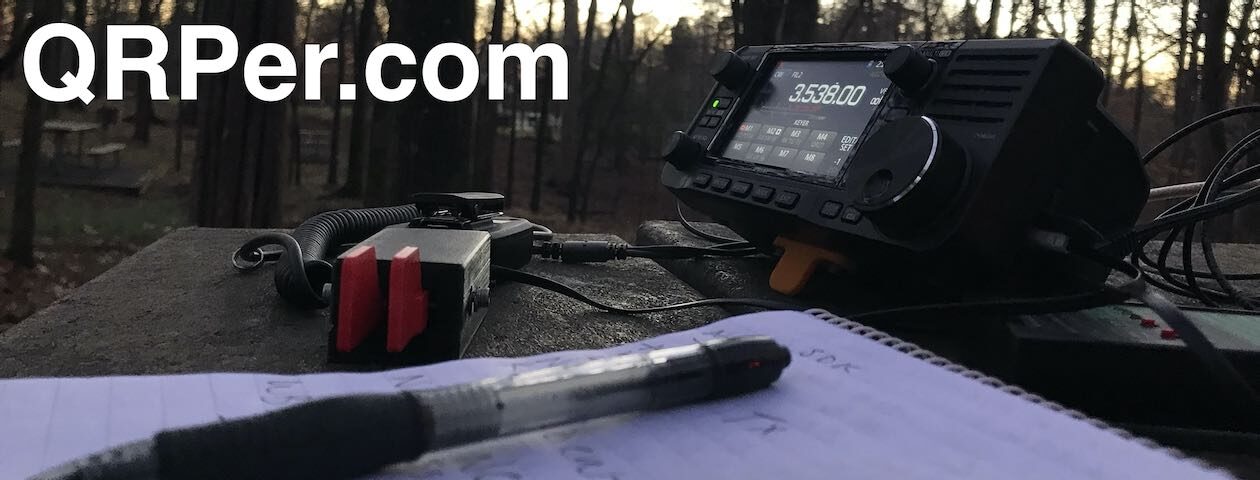 I am catching up with field reports and videos from last month and, I must admit, it’s fun reliving these activations.
I am catching up with field reports and videos from last month and, I must admit, it’s fun reliving these activations.
October was such a busy month, it’s all been a bit of a blur.
Because I have a second Thanksgiving meal to prepare this morning for my wife’s family, I need to keep this report short–which won’t be easy because there’s a lot to unpack here– so we’re going to attempt do another Postcard Field Report!
Postcard Report from Don Carter State Park (K-2171)
 I mentioned in a previous post that I participated in the W4 SOTA campout last month. .
I mentioned in a previous post that I participated in the W4 SOTA campout last month. .
Part of the fun of the campout was hanging with my good friend Joshua (N5FY) whom many of you know from his amazing Tufteln antennas and accessories.
On the morning of Friday, October 13, 2023, Joshua and I activated Rocky Mountain (W4G/NG-011), a beautiful 10 point summit along the Appalachian Trail.
That afternoon, we met with Joshua’s family briefly, then planned to head to a pub in Clayton, Georgia, where a number of the W4 SOTA campers were gathering.
Joshua determined we had just enough time to pop by Don Carter State Park (K-2171) for a quick POTA activation and still make it to Clayton in time. As a bonus, Don Carter SP has a number of covered picnic shelters, making set up in the dry quite easy (it was raining at the time).
For this activation, I used my Mountain Topper MTR-3B field kit that I had used during my SOTA activation on Rocky Mountain. In fact, it was the only radio kit I brought with me for activations that day.
Joshua lent me his Tufteln 40/20 meter linked EFHW antenna (we only used the 20 meter portion of it) and I also got to use a few other accessories that were still very new to me:
N6ARA MiniSWR Meter
One was my friend Ara’s latest creation, the MiniSWR meter. Ara (N6ARA) kindly sent me this production unit to test (at no cost to me) earlier in October.
I was very excited about this particular product because a few of my QRP radios lack a built-in SWR meter (my MTR-3B, MTR-5B, TR-35, and SW-3B to name a few). Ara’s MiniSWR meter is so tiny, it’s easy to carry even in my MTR-3B SOTA kit that’s built into a Pelican 1060 waterproof case. (If you’d like more details, I’ll be adding this MTR-3B kit to the Radio Field Kit Gallery soon).

As with all of Ara’s products, the MiniSWR works brilliantly, is very affordable, and is available as a kit or pre-assembled. Check it out at N6ARA.com!
Rechargeable 9V Batteries
Another new-to-me product was this USB-C rechargeable 9V battery originally recommended by Adam (K6ARK).
Being honest here: this battery sort of blows my mind!
When paired with super efficient QRP radios like my MTR-3B (which uses something like 18mA in receive), one charge will take me through as many as two or three full SOTA/POTA activations!
These batteries are insanely affordable too. You can buy two for $15 and change at Amazon.
When I purchased these, I also bought two 3S packs in a Prime Day deal. These 9V batteries work so well, though, I’ve yet to add PowerPoles to the new 3S packs. I prefer the size and ease of use of these 9V cells.
Set up
 Joshua helped me set up in short order. We deployed the 20M EFHW next to the picnic shelter and Joshua kindly lent me his OSMO 2 Action Camera and Anker SoundCore Mini speaker so I could make a video of this impromptu activation. Continue reading Field Report with N5FY: Checking out the new N6ARA MiniSWR (and a sweet 9V battery) at Don Carter State Park!
Joshua helped me set up in short order. We deployed the 20M EFHW next to the picnic shelter and Joshua kindly lent me his OSMO 2 Action Camera and Anker SoundCore Mini speaker so I could make a video of this impromptu activation. Continue reading Field Report with N5FY: Checking out the new N6ARA MiniSWR (and a sweet 9V battery) at Don Carter State Park!






 I had just enough of my portable kit with me to make this happen.
I had just enough of my portable kit with me to make this happen.














































